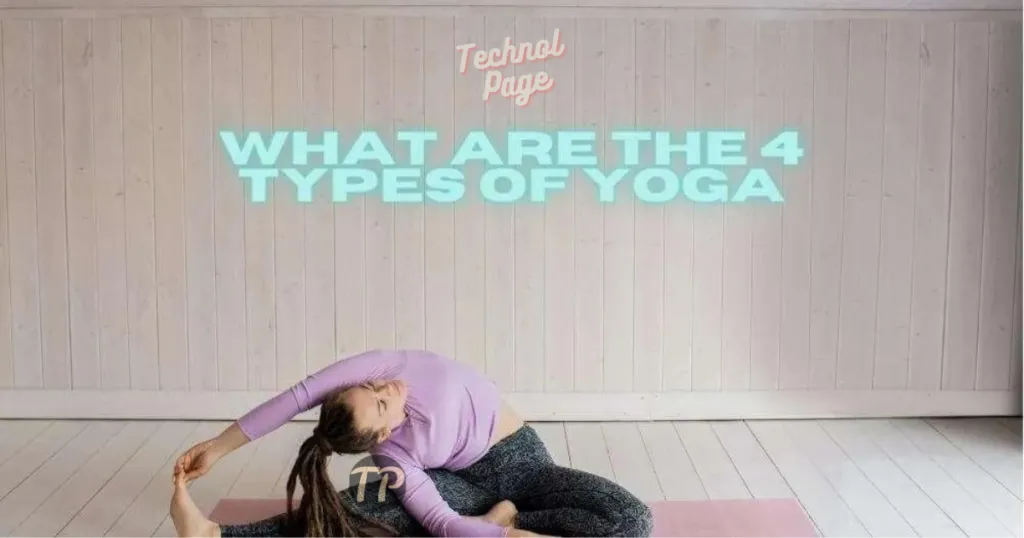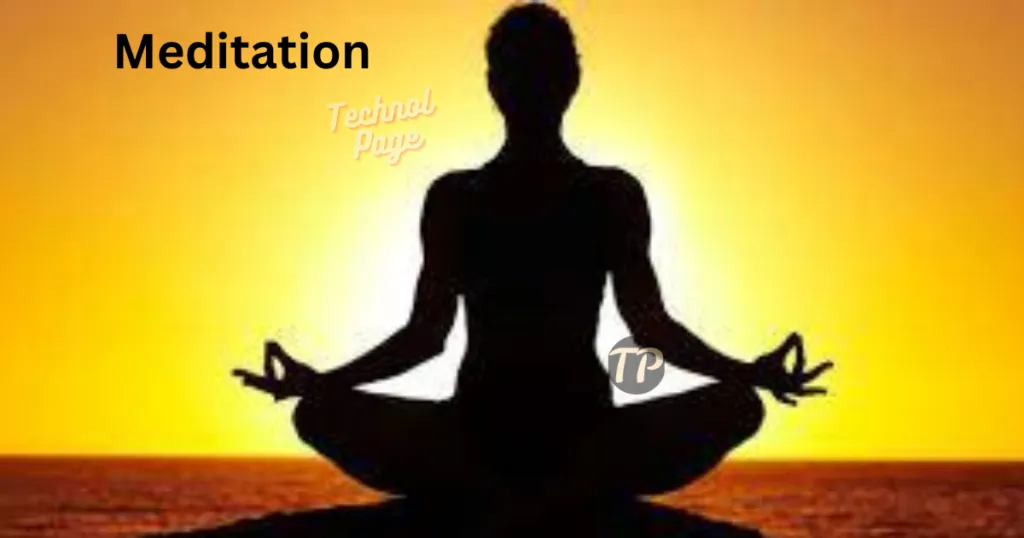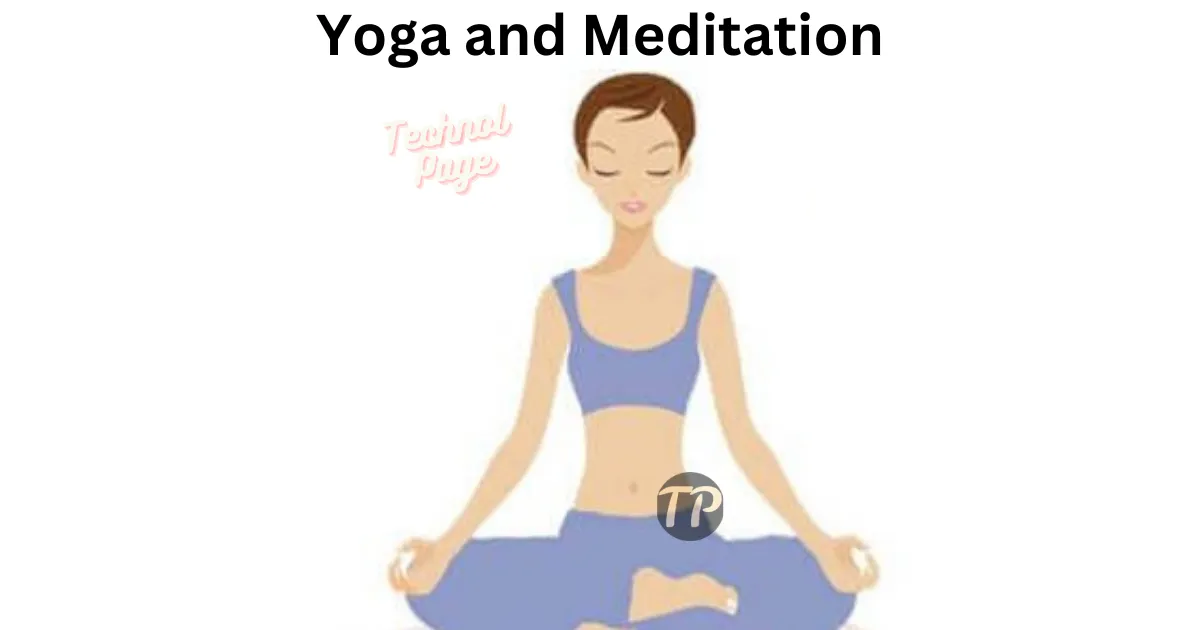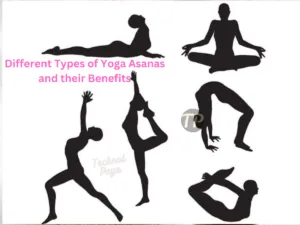Table of Contents
Yoga and Meditation Benefits

Yoga
Introduction to Yoga
Yoga is a system of physical, mental, and spiritual exercises that have their roots in ancient India. The word yoga literally means “to add.” Yoga incorporates physical exercise, breathing exercises, meditation, and asanas (or body postures) with physical activity.
The word “yoga,” which refers to the internal unification of the physical and spiritual, is its very definition. In addition, it represents the perfect balance between the human and the natural world, as well as the unification of individual consciousness with the collective consciousness. The Indian Rigveda and Upanishads both make reference to the practise of yoga.
Types of Yoga

There are many types of yoga but there are some main types also, although there is no exact type of total yoga because some names also have synonyms and we start counting them among the types of yoga as far as we understand and know. Based on the fact we have gathered, we will talk about some major types.
1). Raj Yoga
Rajyoga is the name given to Samadhi, the final state of yoga. Because it undoubtedly possesses some specialisation in all forms of yoga, it has been referred to as the “king of all yogas.” This involves setting aside some time for introspection on oneself. It is an activity that anyone can engage in. It is referred to as Ashtanga Yoga by Maharishi Patanjali, who also covers it in great detail in the Yoga Sutra. The eight types he has identified are as follows:
- Yama (swearing)
- Rules (self discipline)
- Posture (posture)
- Pranayama (breath control)
- Pratyahara (control of senses)
- Dharana (concentration)
- Meditation
- Samadhi (liberation from bondage or union with God)
2). Hatha Yoga
This is a traditional spiritual practise from India. Ha in Hatha refers to Hakar, or Pingala Nadi, the right nasal vowel. In addition, the word Tha signifies Thakar, or the left nasal vowel, also known as Ida Nadi. Yoga serves to unite the two. An attempt is made to keep these two nadis in balance through Hatha Yoga. Hatha yoga is thought to have been practised by sages and sages in the past. The popularity of Hatha Yoga has grown significantly in recent years. The mind is at ease and health is enhanced by doing this. This teaches the postures and methods of practising yoga. The Sanskrit word “Hatha” (which describes a particular kind of Hatha Yoga) means to obstruct by force. These days, many nations have begun offering Hatha Yoga classes where basic knowledge of the asanas is imparted.
3). Karma Yoga
Karma Yoga holds that everything we go through in the present is a result of our past deeds. Man continues to work in the world through Karma Yoga, remaining free from illusions, and eventually becoming fully absorbed in God. Householders are thought to be the best candidates for this yoga. It is possible to practise this yoga by being religious, having the correct attitude, having the right intentions, and doing one’s duties as effectively as possible. Learning new skills, developing one’s personality, purifying the soul, and improving mental flexibility and tolerance are all facilitated by practising Karma Yoga.
Types of Karma Yoga
There are two types of Karma Yoga, the first of which is Sakam Karma and the second is Nishkam Karma.
4.) Gyan { knowledge } yoga
Gyan Yoga is regarded as the wisdom path. It is a way to introduce oneself and gain knowledge. This eliminates ignorance, or the darkness in the mind. It is said that Gyan Yoga is the only path to soul purification. Gyan Yoga is the practise of meditating while attaining the pure form. Additionally, studying the Yoga Sutras develops intelligence. The hardest yoga is regarded as being Gyan Yoga. Ultimately, the practise of Gyan Yoga is nothing more than realising the vast potential that lies within each individual and immersing themselves in Brahma. Gyan Yoga differs from other forms of yoga in that it is a spiritual practise. By enhancing one’s wisdom, Gyan Yoga can aid in mental calmness. Gyan Yoga is also referred to as the “path of knowledge” for this reason. It aids in one’s intellectual self-understanding and awareness of life’s realities. For this reason, Gyan Yoga is also regarded as the way to salvation. A person can better understand and enhance his own personality with the aid of Gyan Yoga.
The tradition describes gan yoga as the pinnacle of meditation and a way to discover one’s inner self. Among the practises of Gyan Yoga are:
1}. Meditating on ajna chakra
2}. Meditating Light in the Heart Chakra
3}. Meditating in trikuti
There are mainly four principles of Gyan Yoga which are listed below.
Discretion
Asceticism
Hex property
Mumukshatva
Benefits of Yoga
The practise of yoga has numerous advantages. Yoga improves both physical and mental health, while working out alone keeps our bodies in good shape. Benefits of yoga include:
1). Yoga for balanced blood pressure
Due to poor lifestyle choices, a large number of people experience blood pressure issues. If someone has a blood pressure issue, they should begin practising yoga today under the guidance of a yoga instructor. Yoga is a great way to balance high blood pressure.
2). Yoga for stress free life
Everyone is harmed by stress. Living a normal life becomes difficult for someone who is under stress. Yoga is the only way to reduce stress. Doing yoga will infuse you with renewed vitality. Reducing stress is normal.
3). Yoga for body fatigue
Many muscular movements, such as stretching, twisting, and stretching, occur when we practise yoga. This makes our bodies feel refreshed and eliminates fatigue. Your body will have energy if you practise yoga on a regular basis.
4). Yoga for peace of mind
Yoga not only helps us maintain a calm mind but also provides our bodies with excellent exercise. Studies in medicine have demonstrated that yoga promotes physical and mental well-being.
Yoga improves digestion and appetite while reducing stress and promoting better sleep. It consistently calms the mind.
5). Yoga to control weight
Over 75% of people on the planet are obese. However, we can manage obesity by incorporating yoga into our daily routine. Yoga helps the body become more flexible.
It tones our muscles and gets rid of extra body fat. Additionally, it fortifies our digestive system. Staying fit can be achieved through yoga.
6). Yoga to get rid of anxiety
Stress is inevitable for someone who is consumed by worry. Heart problems can even be caused by anxiety. Yoga is a useful tool for people who are overly anxious. Yoga will not only help you get over mental health issues and negative thought patterns, but it will also equip you to deal with all of life’s challenges.
7). Yoga to increase concentration
Yoga has the potential to improve focus as well. Regular yoga practise improves focus and productivity. All of the challenges that stand in the way can be easily overcome during this time. Regardless, it is said that focusing on one’s work is the fundamental ingredient for success.
There are many benefits of doing yoga. It may be difficult to tell about all the benefits in this one article, so we will tell you the benefits of different types of yoga in the upcoming blog.
Meditation

Introduction to Meditation
A mental workout that incorporates awareness, focus, and relaxation is meditation. Meditation is an exercise for the mind, just as physical exercise is for the body. Usually, this exercise is performed alone, sitting quietly and closing one’s eyes.
A person can improve focus and awareness by practising meditation, which involves focusing on a specific object, idea, or activity while employing a technique like mindfulness. Its practise clears the mind and brings about emotional stability and serenity.
Man cannot find time for anything, not even his health, in his hectic life. You consequently become more susceptible to numerous dangerous illnesses. Yoga and meditation are excellent ways to help you get rid of all these problems. There are numerous ways to accomplish this, none of which require you to alter your daily schedule significantly or require any extra preparation.
How to do meditation
Many people are curious about how to meditate, despite the fact that it is thought to be very healthy. Allow us to inform you that the practise of meditation entails certain unique guidelines. It is imperative that these be taken care of. Using these, you can begin practising meditation.
1}. How to sit for meditation
First, assume the positions of Padmasana, Sukhasana, and Vajrasana. To ensure that your breathing is appropriate while sitting, maintain a straight spine. However, you can use a chair if you are unable to sit in these positions for any reason.
2}. Relaxed state for meditation
Put your entire body in a relaxed posture first. Allow your body to be completely relaxed so that every muscle can unwind. Begin with your feet and work your way up to your face. Ensure that your body is at rest throughout.
3}. Breathe easy
Once you’ve reached a relaxed state, become aware of your breathing. Permit your body to breathe on its own. Next, inhale deeply and slowly, and then release the breath in the same way.
4}. Focus attention on one place or point
Try to focus your attention on just one thing in the third step. You focus on your inner self, or soul, for this. You use a count of one to ten for this. Do this several times over. You can also attempt to focus on an idea or object that brings you joy at the same time.
When you meditate for the first time, it’s likely that your mind will stray from your meditation practise. It will therefore be crucial to make an effort to establish mental equilibrium and to prevent daydreaming. Try to bring your thoughts back to focus if they stray for any reason.
Illusions that disrupt meditation include restlessness, itching, feeling emotions, daydreaming—dreaming while awake—constant influx and outflow of various kinds of thoughts, etc. It will be crucial to persuade your mind that these are merely outside distractions that could interfere with your meditation. Aim to steer clear of these and focus your thoughts. One can reach the highest level of meditation after conquering all of these challenges. It takes consistent practise to get here.
Types of Meditation
1}. Vipassana meditation
These days, a lot of people meditate in this way. Man looks inside his own mind to try and understand himself with its assistance. Man can better distinguish between right and wrong and gain control over his thoughts and emotions with its assistance.
2}. Mantra Meditation
The Sanskrit word mantra is composed of two words: trai, which means “to protect” or “to free from,” and man, which means “mind” or “to think.” Mantras, then, refer to mental or cognitive liberation. Mantra meditation helps you shift your mind away from negative ideas and towards positive ones.
3}. Mindfulness meditation
A type of meditation called mindfulness meditation assists the practitioner in staying conscious and in the moment. You can train yourself to become aware and focused by doing this meditation. When practising, you focus on all the sounds, smells, and activities that are going on around you. It can be used at any time and anyplace.
4}. Zen meditation
Chinese Buddhism propagated and aided in the spread of this kind of meditation. Let us explain that this type of meditation falls under the category of mindfulness meditation, which places a strong emphasis on mental concentration. You must sit in Sukhasana pose and clasp your hands together in order to perform this meditation posture. While in this state of meditation, your primary focus should be on your daily tasks. This kind of meditation is thought to be beneficial for developing your mental health and prosperity.
5}. Spiritual meditation
You can see the world differently from illusion by practising spiritual meditation. You can manage your emotions if you consistently use it. This gives you fresh mental energy to carry out your ideas and goals.
6}. Focused meditation
Any one of the five senses can be used to focus attention. You may, for instance, direct your attention inward, to your breath or a spot on your head or nose. In addition, you have the option to focus on outside factors. similar to that of music, a candle flame, a tree, and the moon. Though theoretically straightforward, novices might find it challenging to stay focused for longer than the first few minutes of this exercise. Refocus by simply returning to the practise if your thoughts stray.
7}. Chakra Meditation
The word “chakra” is old Sanskrit. The term “chakras” describes the body’s spiritual and energy centres. Chakras are thought to come in seven different varieties. Every chakra has a matching colour and is situated in a distinct area of the body. The main goals of chakra meditation are mind control and chakra balancing. This prevents mood swings and maintains good hormonal health.
Benefits of Meditation
1]. Reduction in anxiety and depression
Anxiety and depression can be effectively eliminated with the help of meditation.
2]. Heart health
Research has demonstrated that meditation can effectively lower all heart-related risk factors, including blood pressure, stress, and anxiety.
3]. Brain development
Additionally thought to be very beneficial for brain development is meditation. The reason is that mental illnesses like stress, anxiety, and depression can be treated with its assistance. The brain’s capacity to operate improves when it is shielded from these.
4]. Meditation is best to improve sleep
It is believed that practising mindfulness meditation can enhance sleep quality. Concurrently, an investigation carried out in this context has verified that its application can be deemed advantageous in eliminating sleep-related issues.
There are many more benefits of meditation which we cannot tell in this one article, but in the upcoming meditation blog, we will definitely tell about the types of meditation and their benefits.
Meditation Tips
After knowing the benefits and types of meditation, in this article of Technol Page we want to give you some tips which you have to remember while meditating.
- Right time to meditate
- The environment should be quiet while meditating
- Meditate on an empty stomach if possible
- Before meditating you should do a light warm up.
- While meditating you have to take long and deep breaths in and out
NOTE : –
You may face some problems while meditating. You feel that the meditation we do is harming us or our body. If you feel that after meditation, some negative effects are seen in our body. So you can immediately consult a qualified and experienced yoga meditation specialist or you can also talk to your family doctor.
Disclaimer:-
The suggestions given in the article are for general information only and should not be taken as professional medical advice. Consult your doctor if you have any questions or concerns.
You have read this blog completely and with great attention ,This is our sentiment. If you have any questions regarding the content of our website, you can contact us.
Please visit us :- To know more about our website, please visit our About Us and Disclaimer page.
Thanks





